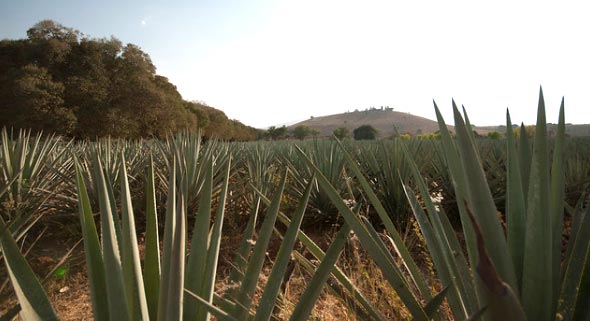by Amanda Mather, Curator of Collections
As we continue on with our gifts of the West series I want to talk about one of those gifts that keeps on giving. It gives us fiber, food, booze, awls, needles. I mean what can’t this baby do? I am talking about our friend: Agave.
Agave has been cultivated in Mexico and the Southwestern United States by Native peoples for thousands of years. Although most of the farming of Agave was concentrated in Southern Central Mexico and Southern Arizona, the Mogollon people of New Mexico were also known to plant agave.
This plant can almost do it all — it doesn’t know when to stop! Its leaves can be eaten when full of nectar in the spring and fall. The leaves can also be stripped and made into strong fiber for rope, clothing, or other household items. The leaves were can be processed and turned into paper, the paper on which the Aztec Codices, for example, were written. The tips of the leaves are sharp and strong and can be used as needles for making baskets or clothing. The flowers can be eaten when it blooms as can the root, or pina, of the plant.
When roasted, Agave takes on a deep smoky sweetness that can either be eaten right away or turned into the ancient drink pulque, the beer of the Americas. I have had it before, tucked in little corners of the markets of Mexico, sold to you out of a large clay pot in a gourd and often sprinkled with chile salt. At first you’re like, “OK, this is pretty weird” but by the end you can’t get enough!
When the Spanish arrived they brought stills to the west and Agave became yet another great thing: Mezcal. Mezcal’s most famous iteration is tequila, which, like Champagne, has certain standards to ensure quality. For example, it can only be made of Blue Agave in the Mexican state of Jalisco.
So let’s drink a toast to the agave — giver of clothing, fiber, paper, rope, needles, awls, food and last but certainly not least, margaritas. Cheers!

